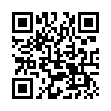Syslogd Overwhelming Your Computer?
If your Leopard (Mac OS X 10.5) system is unexpectedly sluggish, logging might be the culprit. Run Activity Monitor (Applications/Utilities/ folder), and click the CPU column twice to get it to show most to least activity. If syslogd is at the top of the list, there's a fix. Syslogd tracks informational messages produced by software and writes them to the asl.db, a file in your Unix /var/log/ directory. It's a known problem that syslogd can run amok. There's a fix: deleting the asl.db file.
Launch Terminal (from the same Utilities folder), and enter these commands exactly as written, entering your administrative password when prompted:
sudo launchctl stop com.apple.syslogd
sudo rm /var/log/asl.db
sudo launchctl start com.apple.syslogd
Your system should settle down to normal. For more information, follow the link.
Written by
Glenn Fleishman
Recent TidBITS Talk Discussions
- Alternatives to MobileMe for syncing calendars between iPad/Mac (1 message)
- Free anti-virus for the Mac (20 messages)
- iTunes 10 syncing iPod Touch 4.1 (2 messages)
- Thoughts about Ping (16 messages)
Published in TidBITS 887.
Subscribe to our weekly email edition.
- Apple Silences Mac OS X 10.4.10 Popping Sounds
- Nisus Writer Pro Restores Classic Features
- VMware Posts Fusion Release Candidate, Announces Final Pricing
- ChangeShortName Simplifies Name Changing
- AppleCare, Battery Replacement, Service for iPhone
- Trading In-Home Wi-Fi for Powerline Networking
- Hot Topics in TidBITS Talk/09-Jul-07
VMware Sponsoring TidBITS
We're pleased to welcome our latest long-term sponsor, VMware, the company that is not just the latest entrant into the virtualization market for Intel-based Macs, but also the overall market leader in virtualization.
Without a doubt, the biggest story in the Macintosh world over the last year has been the switch to Intel processors, largely because it introduced virtualization to the platform. Although most Mac users think of virtualization as giving them the capability to run Windows programs on a Mac, it more generally encapsulates an entire operating system within a virtual machine - the virtualization application pretends to be a physical computer. With virtualization, you can run multiple operating systems simultaneously, but you can also distribute virtual machines with pre-configured software to many users in an organization, test software in a clean environment and easily revert back to a clean state after running a test, move complex server configurations between different computers, and more. In short, virtualization is important stuff, and I expect that we'll be seeing more of it on the Mac.
VMware Fusion, slated for release in August 2007 but available now for download in Release Candidate form and for pre-order at 50 percent off, is VMware's first Mac product. Although it's too soon to review it or compare it to the competition, it looks extremely promising. I particularly like the Unity feature that eliminates the Windows desktop entirely. I don't like using Windows, and when I want to run a Windows application, I'm interested only in that application, not in anything else related to Windows. That's what Unity does: it breaks Windows applications out of the Windows desktop and lets them mix with Mac applications (check out this YouTube video if you're having trouble visualizing this). They can appear in the Dock, show up as individual windows in Exposť, and even accept drag-and-drop from other applications. Sure, they still look like Windows applications, but that's a small price to pay for letting you avoid Windows itself.
Thanks to VMware for their support of TidBITS and the Mac community!
 Dragon speech recognition software for Macintosh, iPhone, and iPad!
Dragon speech recognition software for Macintosh, iPhone, and iPad!Get the all-new Dragon Dictate for Mac from Nuance Communications
and experience Simply Smarter Speech Recognition.
Learn more about Dragon Dictate: <http://nuance.com/dragon/mac>

